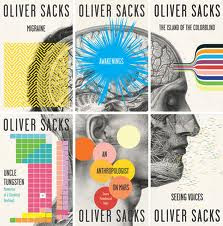There is something to be said about writing a series when it comes to sales. Each successive book not only provides additional profits for the author of that particular title but also adds to the sales made of previous books and lines up a greater audience for the next - as long as you don't write a complete dud or bump off all the best characters in belittling ways that make an avid reader terribly upset. The reason for this is just your average reader's need to continue or finish the story.
But there are those who take the following of a story or several stories to new levels. They collect and not just for stories but also for aesthetics. Their books are maintained in perfect or near perfect condition. Sometimes two copies are bought, as done with comics. One copy is for reading while the other is for the collection. There are those obsessed with colours, sizing, correct covers all from the same printing (the covers in America often differ from those printed in Australia or England etc.). Mismatched books within a series can drive a collector batty. There are even those who'll go so far as to collect not just an author's works but a publisher's, particularly if the publisher distinctly brands all their books a certain way. (You may doubt this but I have seen a quite large Mills and Boon collection amongst others.)
In fact, if you work in cover design for a publisher or are a self-publisher looking at having artwork created for your series then you could encourage such obsessive collecting by doing a few simple things.
- Add numbers to the bottom of the spine that indicate the number in the series.
- Have matching spine design.
- Make sure the books are all printed in the same format or size.
- Make sure the book length is roughly similar per book.
- Spread a single image over the spines of several books so that when shelved correctly and in full they make up the picture.
- Ensure the cover designs use similar colours or follow a pattern of colour gradations.
- Change the publishing Logo colour (where possible) to match the colour scheme of the books.
- Ensure the front and back cover designs follow a similar pattern even if different images are used.
- Weave the front and back covers into the spine design so that the images don't immediately cut off. This may be done simply with grading colour.
- Create a 'logo' or symbol that goes with that series alone and stamp it on the spine, number possibly included.
- Ensure that block pictures under titles all line up as staggered pictures are aesthetically unpleasing. Even if the bottom of the title is lower don't lower the picture. This may require some careful consideration and manipulation of details.
- Inserting special sections on either the author, the writing process, the character profiles, interviews etc can increase interest and mark each book. These sections work best when they are focused on the series, only occasionally referencing another work by the same author. Sections on other authors by the same publisher help in increasing the publisher's sales but not the author's so choose according to need.
- And for the absolutely fanatical collectors of ultra-popular works there is an opportunity to print special or limited editions complete with a different design and extra information. You could even make them personally signed by the author (I suggest this for limited copies only unless you want the author's hand to fall off).
- For the ultra-clever, design the front covers so they click together to make a full image.
By doing these things you will ensure that the avid collector will be compelled to buy a specific set of books as soon as they buy the first. Sometimes story degradation will actually be disregarded in favour of completing the set and this can only help with sales.
This may all seem quite cutthroat but business is business on the publisher's side and the author does need to survive. Also, if a collector wishes to buy in such ways then why not provide for them? It won't decrease sales to any other audience so there isn't really a downside to providing a collector with what s/he needs. You are actually more likely to lose some sales by not creating a look for your series due to the lack of the collector's attention as well as the average reader's inability to instantly recognise the associated story (not everyone remembers who the author or publisher are for a particular story as the story is all).









No comments:
Post a Comment